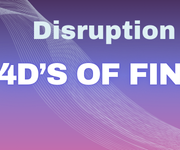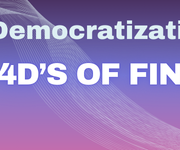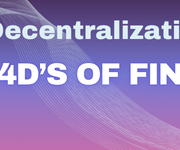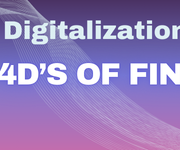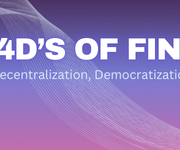The financial industry has always prided itself on stability, tradition, and a bit of formality. Yet in recent years, a wave of technological disruption has stormed through its hallowed halls, sweeping away old models and introducing bold new solutions. Welcome to the world of finance disruption, where fintech, insurtech, and regtech are redefining how we interact with money, manage risk, and comply with regulations. Gone are the days when bankers, insurers, and regulators alone dictated the rules; now, agile tech-driven companies are reshaping finance to be more customer-centric, fast, and personalized. And this shift? It’s anything but traditional.
Fintech’s Financial Revolution: Robinhood and Square Lead the Way
Fintech, the catch-all term for technology-driven financial services, has rocketed into the mainstream by simplifying financial transactions and making services more accessible. A big part of fintech’s appeal lies in its ability to strip away the complexities (and fees) of traditional finance, offering streamlined, user-friendly platforms.
Take Robinhood, for instance. By launching a mobile-first, commission-free trading app, Robinhood didn’t just provide a trading platform; it democratized investing. Now, anyone with a smartphone can trade stocks without hefty brokerage fees, which were once the privilege of only seasoned traders or wealthier clients. The result? An unprecedented surge in retail investors, many of them younger and without the deep pockets that traditional brokers once demanded.
Square, too, has shaken up finance in its own way. Originally known for its small, square credit card reader, the company has evolved into a full-service financial ecosystem for small businesses and individuals. Square’s Cash App enables person-to-person payments, while its business services allow even the smallest vendors to accept card payments and access business loans without the usual hassle. By focusing on inclusivity and ease of use, Square has empowered small businesses to grow and compete in a digital-first marketplace.
Insurtech: Personalized, On-Demand Insurance
The insurance industry—typically not known for its tech-forward approach—has also found itself disrupted by new players that prioritize convenience and customization. Insurtech companies like Lemonade have embraced AI and machine learning to streamline the insurance process, from underwriting to claims processing. Instead of meeting with agents, filling out forms, and waiting days for a response, Lemonade’s app allows users to get insured or file a claim in minutes.
Lemonade’s appeal lies in its transparency and speed. The company operates on a unique model where users pay a fixed monthly fee, and any leftover funds after claims go to charity. This peer-focused approach has struck a chord with younger consumers who appreciate the ease and social mission. More importantly, Lemonade’s use of AI to assess claims minimizes delays, delivering a service experience that is more in line with modern consumer expectations.
Regtech: The Unsung Hero of Compliance
For all the excitement around fintech and insurtech, regtech (regulatory technology) often gets overlooked. Yet it’s arguably one of the most essential disruptors in today’s financial world. Regtech companies are tackling the complexities of regulatory compliance, helping financial institutions adapt to the ever-evolving maze of rules, reporting requirements, and data protection laws.
Firms like Trulioo and Onfido have turned to AI and machine learning to streamline compliance processes. They offer automated Know Your Customer (KYC) and Anti-Money Laundering (AML) checks that verify identities in real-time, eliminating what used to be labor-intensive, manual processes. By automating compliance, regtech not only saves time and costs but also helps prevent financial crime, which has become more sophisticated in the digital era.
AI and Quantum Computing: New Frontiers of Disruption
Artificial intelligence has had a massive impact on the financial industry, but it’s also opening doors to even greater transformations. Machine learning models, for instance, can predict stock market trends, detect fraudulent transactions, and personalize customer experiences. AI-driven robo-advisors are also becoming mainstream, providing tailored investment strategies that were once reserved for clients of high-net-worth advisory firms. With AI, customers now receive real-time financial insights, personalized advice, and risk assessments—all without ever needing to sit down with a financial advisor.
While AI is reshaping the present, quantum computing looms as the next frontier. Though still in its infancy, quantum computing has the potential to solve complex calculations at speeds unimaginable with current technology. In finance, this could revolutionize portfolio optimization, risk analysis, and even cryptographic security. If AI is today’s disruptor, quantum computing could very well be tomorrow’s game-changer, setting the stage for advancements that will make today’s technology look quaint.
How Traditional Players Are Fighting Back
For traditional financial institutions, the onslaught of these disruptive forces has been a wake-up call. Rather than sitting idly by, many are now taking steps to adapt. Banks and legacy financial firms have rolled out digital services, upgraded their mobile apps, and embraced APIs to enable third-party integrations, trying to stay relevant in a landscape where user experience reigns supreme.
Some banks are adopting a “if you can’t beat them, join them” approach by partnering with fintechs or acquiring them outright. For example, Goldman Sachs acquired Clarity Money, a personal finance management app, to boost its own digital banking initiatives. Other banks are diving into the world of robo-advisory and mobile lending, attempting to offer the same digital-first services that fintechs do, albeit with a more established brand backing them up.
But the adaptation strategy goes beyond partnerships and acquisitions. Traditional players are heavily investing in their own digital transformations, integrating data analytics and AI into their services to compete with the speed and efficiency of fintech startups. And while these incumbents have the challenge of updating legacy systems, their deep pockets and brand recognition still give them a unique edge.
Regulatory Responses: Guardrails for Innovation
As disruption in finance accelerates, regulators have faced the dual challenge of encouraging innovation while protecting consumers. A laissez-faire approach to regulation could foster rapid advancements but could also lead to increased risks of fraud and abuse. At the same time, too much regulation could stifle the very innovations that are transforming the industry.
One of the approaches regulators are embracing is the “regulatory sandbox.” These sandboxes allow fintech and other disruptive firms to test new products and services in a controlled environment, under regulatory supervision but without the full burden of compliance. This approach allows regulators to understand emerging risks better while also allowing companies to innovate more freely. The UK’s Financial Conduct Authority (FCA) was an early pioneer of the sandbox model, and similar initiatives have since been adopted in other regions.
Regulators are also increasingly adopting technology to stay ahead of the curve. Regulatory technology, or regtech, enables faster, more efficient monitoring of financial transactions, helping regulators detect fraud, enforce compliance, and respond to emerging risks in real-time.
Disruption’s Uncertain Future: Challenges and Opportunities
As innovative technologies continue to disrupt finance, it’s clear that the future will hold both opportunities and challenges. Fintech, insurtech, and regtech are all redefining customer expectations, making services faster, more convenient, and more accessible. Yet the speed of this disruption is also creating challenges that neither traditional institutions nor regulators are fully prepared for.
Privacy concerns, cybersecurity threats, and the potential for systemic risk remain as major concerns. As companies store vast amounts of user data and rely more on automation, the potential for breaches, exploitation, and even algorithmic bias becomes a significant risk. The use of AI for decision-making, for instance, is sparking debates on transparency, fairness, and accountability, as AI-driven algorithms don’t always provide the clearest reasons for the decisions they make.
Despite these challenges, the disruptive wave shows no signs of slowing down. With each new technological breakthrough, the industry moves closer to a financial future that is more accessible, personalized, and, hopefully, resilient. The players in this evolving landscape—from traditional banks to nimble startups—will need to adapt or risk getting left behind in a world where customer expectations are only becoming more demanding.
For consumers, disruption has opened up a financial world that is increasingly within reach, inviting them to invest, borrow, insure, and protect their assets in ways that are fast, affordable, and user-friendly. The stage is set for a truly modernized financial ecosystem, and while the journey ahead will undoubtedly be complex, the promise of a more inclusive, efficient, and responsive industry is within grasp.

